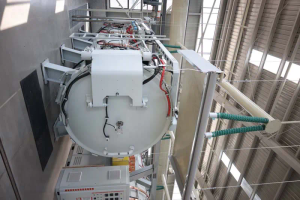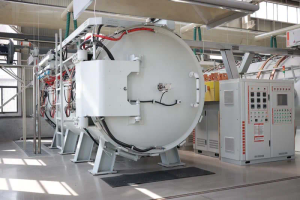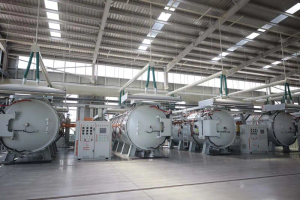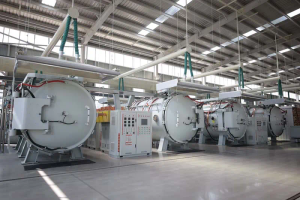Creep (Deformation): Definition, How it Works, Importance, and Graph
This implies the material is experiencing increased creep resistance in this region.
2. Secondary Creep
Also called steady-state creep, this stage is characterized by a constant creep rate defined by a linear curve, (Figure 3 above), and has the longest duration during creep deformation. While there is still a level of strain hardening, this is balanced by the material undergoing a recovery stage that softens the material and enables deformation. This secondary creep rate is what is used by engineers as a parameter to inform their designs.
3. Tertiary Creep
This is the final stage of creep deformation and culminates in the eventual rupture of the material. The mechanism of failure usually manifests as the development of micro cracks, internal voids, and grain boundary separation. These failures ultimately result in a decrease in an effective cross-sectional area which then results in increased stress which accelerates the failure rate. The tertiary stage of creep results in an accelerated creep rate as observed by the increase in the gradient of the curve in Figure 3 above.
What Are the Different Mechanisms of Creep (Deformation)?
The various mechanisms by which deformation occurs on an atomic level are described in more detail below:
1. Nabarro-Herring Creep
Nabarro-Herring creep can be generally categorized as diffusion creep. This creep mechanism occurs primarily at low stress and high temperatures. This type of creep results when atoms diffuse within the crystal lattice of grain due to vacancies that form as the temperature increases. These vacancies are formed where the grain boundary is in tension, i.e., in line with the applied stress. The grain boundaries perpendicular to the applied stress will be in compression. The larger the grain size the slower the creep rate.
2. Creep of Polymers
Polymers can also experience creep when exposed to constant stress and elevated temperatures; however, in some cases, creep can occur at room temperature. The primary mechanism for creep in polymers is the sliding of individual chains in relation to each other. Creep in polymers is more likely with amorphous polymers instead of crystalline ones as amorphous polymers’ molecular chains can more easily slip in relation to each other.
3. Dislocation Creep
Also called power law creep, dislocation creep is a mechanism whereby creep occurs due to atomic dislocations. The strain rate is determined by the motion of vacancies which can present as either glide or climb dislocations. Glide is when dislocations move parallel to their glide plane and climb is when dislocations move perpendicularly to their glide plane.
4. Coble Creep
Coble creep is a type of diffusion creep. This creep mechanism forms primarily at lower temperatures as it is easier for vacancies to occur on the grain boundary than in the grain. Unlike nabarro-herring creep, coble creep occurs where the vacancies move from the grain boundary perpendicular to the applied stress to the grain boundaries parallel to the applied stress instead of through the grain itself.
5. Solute-Drag Creep
This creep mechanism is commonly observed in alloyed elements whereby the solutes in the alloy impede the formation of dislocations in the crystal lattice of the material. This ultimately increases the creep resistance of the material at high temperatures. These alloys are often used in aerospace applications, one example of the typical use cases of Inconel®.
6. Harper-Dorn Creep
Harper-Dorn creep is a type of dislocation creep. For Harper-Dorn creep, grain size has no effect on the strain rate. However, in order for this form of creep to present itself in a material, the grain size must be large (for example 0.5 to 3.3 mm), the material must have a high elemental purity (99.95%), and there must be a low initial dislocation density. Harper-Dorn creep typically occurs from 0.35 to 0.6 times the material's melting point with relatively low stresses.
7. Sintering
During sintering, metal particles are heated to a high temperature. The voids present between these particles will begin to shrink. However, at a certain stress level, this void shrinkage can stop. This stress is called the sintering limit stress. During sintering, the density of the material will increase over time—which essentially is a form of creep. This process is governed by temperature, strain rate, and density.
What Types of Materials Are Subjected To Creep (Deformation)?
The most common materials that experience creep are metals and polymers. However, creep is highly dependent on applied stress and operating temperatures. As such, some metals may never creep in most usual situations. For example, structural steels will only creep at temperatures far higher than normal operating conditions. When materials are required to withstand long-term stress at high temperatures, then creep-resistant super alloys are preferred as they are highly creep resistant.
At What Temperature Does Creep Become Important?
The temperature at which creep becomes important depends entirely on the material. For example, some polymers can experience creep at room temperature, whereas metals generally only experience creep from about 40% of their melting temperature.
What Is Creep Failure?
Creep failure is a time-dependent plastic deformation of a material that has been exposed to constant stress, with higher temperatures increasing the likelihood of creep failure. Creep failure occurs at the tertiary-creep stage. It normally follows an extended stage of steady-state creep. The failure occurs relatively quickly when compared to the steady state phase and occurs with the formation of internal voids, grain boundary separation, and micro cracks.
How To Prevent Creep (Deformation)?
In general, creep deformation can be prevented by selecting materials with high melting points and high creep resistance. A highly creep-resistant material like Inconel® is common in high-performance applications. The exact mechanisms for creep prevention are described in more detail below.
What Are the Factors That Can Prevent Creep (Deformation)?
Creep deformation can be easily eliminated by following the three suggested methods below:
1. Stages of Creep
Creep occurs in three stages: primary, secondary, and tertiary. In most cases, the secondary stage of creep is what is used to determine if a material is compatible with a specific stress and temperature combination. This secondary stage takes the longest time and is defined by having a constant stress rate. The material must remain in this second phase during normal operating conditions to prevent creep.
2. Materials Selection
Creep deformation can be reduced or eliminated by selecting the correct material for the application. Materials with large grains are more resistant to certain types of creep, specifically diffusion creep. Materials without any grains can be highly creep-resistant. A metal without grains can be produced by directionally casting a part to ensure it is made up of a single homogenous crystal. Some iron alloys can be made to be creep-resistant with specific precipitate. Carbide, for example, tends to collect at the grain boundaries to stabilize them, thereby preventing dislocation from occurring at these points. Selecting materials that have undergone dispersion strengthening—where alloying elements have been added to create a second phase within the material—helps prevent dislocations from forming.
3. Various Working Conditions
Creep requires time and temperature. The easiest way to prevent creep deformation is to ensure that the operating temperature is as low as possible. If this is not possible, design the part with a lower service life to ensure it can be replaced while creep deformation levels are still low. Alternatively, materials with higher melting points can be selected.
Can You Still Be Able To Fix Creep (Deformation)?
Creep deformation is permanent and cannot be reversed as the material would have deformed plastically. The only way to fix creep deformation is to change the part or use a material that will not creep under normal operating conditions.
What Is the Difference Between Creep and Brittle Failure?
Creep is a relatively slow form of failure that is dependent on prolonged stress at elevated temperatures. Creep can occur well below the yield point of a material. Brittle failure occurs rapidly and is primarily caused by high stress and can be accelerated by defects such as cracks and inclusions. Brittle failure occurs at the ultimate tensile strength of a material.
Summary
This article presented creep (deformation), explained what it is, and discussed the various examples of it. To learn more about creep (deformation), contact a Xometry representative.
Xometry provides a wide range of manufacturing capabilities, including 3D printing and other value-added services for all of your prototyping and production needs. Visit our website to learn more or to request a free, no-obligation quote.
Copyright and Trademark Notices
- Inconel® is a registered trademark of Special Metals Corporation
Disclaimer
The content appearing on this webpage is for informational purposes only. Xometry makes no representation or warranty of any kind, be it expressed or implied, as to the accuracy, completeness, or validity of the information. Any performance parameters, geometric tolerances, specific design features, quality and types of materials, or processes should not be inferred to represent what will be delivered by third-party suppliers or manufacturers through Xometry’s network. Buyers seeking quotes for parts are responsible for defining the specific requirements for those parts. Please refer to our terms and conditions for more information.



